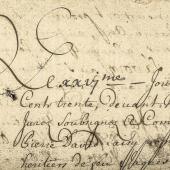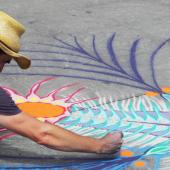Drawing Basics
In this article, we want to provide you with the basics of drawing. How to learn drawing quickly and easily, how to start at best, and what needs to be considered at drawing?
First, you should be clear about what drawing means exactly. In contrast to painting at drawing, the illustration happens by lines and strokes, in general without colour and tonal values. Drawings are usually kept in black and white, because they are created with lead and charcoal pencils. Here we are on the subject of the required drawing materials.
The graphite lead existing in the pencil can have different degrees of hardness. H stands for hard and B for soft. Indicated on a pin the number represents the hardness or softness. The harder a pencil, the lower the graphite application on the drawing surface. That is, with harder pencils the line thickness is thinner and lighter than with soft pencils. With hard pencils, one easily can draw well the bright areas in an image or create unobtrusive sketches, with softer ones one can design dark and distinctive areas well. Ink pens are also popular for drawings. With them, you cannot draw proper shadows or gradients. With an ink pen, this is only achieved using specific hatching techniques. The second most important aspect at drawing is the surface base. You get drawing paper or cardboard in different sizes, square weights and roughness levels. Here it is advisable to make sure that the paper or cardboard on the surface is not too rough, otherwise the structure of the paper may become visible while drawing. Recommended to start with is paper with a thickness of 120-150 grams. Furthermore, a sharpener and an eraser are basic drawing utensils.
In the first drawing exercises, one should explore the material. Initially best only draw simple arcs, lines and swings, and press one time hard, the other time gently with all pencil types. This way you get a sense of how pencil and paper work together. Next, you can try to draw black surfaces with a soft pencil. A packing sheet under the heel of your hand thereby avoids blurring of the black surface. Another excellent beginner exercise is drawing circles. It usually takes years of practice in order to draw a good circle freehand. Try not only to draw with the hand, but also with the arm. The smallest circle one almost draws just exclusively with the thumb, the midsize out of hand and the great out of the arm. To draw out of the arm, that is to keep the elbows up, this trains drawing. This exercise can then continue with various abstract shapes such as squares, ovals, spirals, etc. Through learning and experiencing the study materials, the way to learn drawing is paved. Thus, you soon can dare "real drawings".




